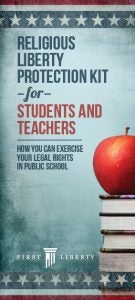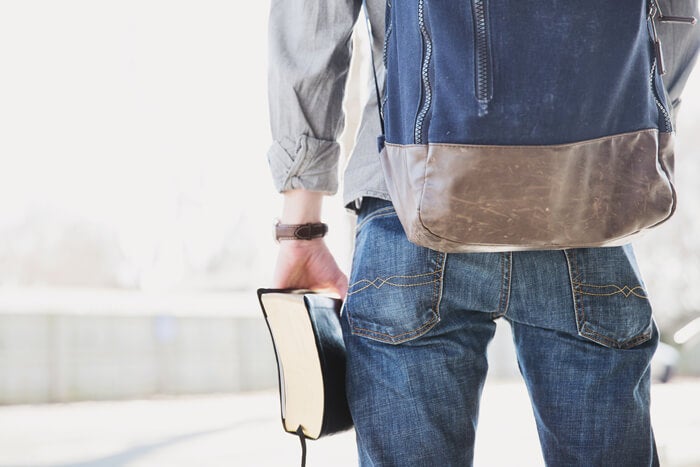Empty classrooms came to life again this week as students from kindergarten to college headed back to school. And in a world when campuses are no longer always the safe havens that families wish they were, there is one thing no student or teacher should ever be required to sacrifice: their religious freedom.
Unfortunately, however, students and teachers find their constitutional religious expression threatened every school year.
Thanks to misguided beliefs about the First Amendment’s Establishment Clause regarding faith in school, many students and teachers believe that they have no legal rights to express their faith.
That is simply not true. From the First Amendment itself, to the Equal Access Act of 1984, and multiple court decisions in between, protections of religious liberty rights for students and teachers are broader than you may think.
Here are 25 surprising facts about religious rights in public schools.
- Students and educators do have First Amendment religious rights inside public schools.
- Students can speak about their faith even when teachers must be neutral.
- Schools cannot treat religious activity differently than other activity.
- Students can pray during lunch, recess, or other designated free time.
- Students can pray silently during a school’s moment of silence.
- Students can read the Bible or other religious materials at school.
- Students can share their faith with fellow students during free times when they could discuss other topics like the movie they just saw or their weekend plans.
- Schools can acknowledge religion.
- Students can pray, either individually or as a group, at school athletic competitions, student assemblies, or other extracurricular activities when school officials are not involved.
- In many cases, students can pray before an athletic competition (such as a football game), a student assembly, or other extracurricular event as part of the school program.
- Students can pray at graduation ceremonies or include religious content in their speeches.
- A public school can refer to “Christmas” and have a “Christmas party” if the intent is not to advance Christianity.
- A public school can display Christmas decorations if the intent is to teach and not part of a religious exercise.
- A public school can include religious music, art, or drama in a school play or performance if it is used to teach history or cultural heritage and not advance a particular religion.
- Students can give out Christmas gifts with religious messages at school parties.
- Students can incorporate their faith or religion in classroom and homework assignments so long as the work meets the requirements of the assignment.
- A public school district cannot be hostile toward religious beliefs.
- Teachers and other public school employees can discuss religion with students as cultural and historical education or when asked by the students.
- Teachers and other public school employees can discuss religion with other teachers or other school employees.
- A public school or a teacher cannot limit religious speech by students unless they limit other speech.
- If students can have a secular extracurricular club, then students can have a religious club at their school.
- Religious student groups can meet on campus whenever other non-curricular clubs can meet.
- Religious clubs can use the same school resources available to non-religious clubs (e.g., school facilities, bulletin boards, public address system) to promote or facilitate club events.
- In most states, teachers or other public school employees may attend a religious student group’s meetings in a supervisory role.
- Members of religious student clubs can distribute flyers about meetings and events just like non-religious clubs.
In the Supreme Court case Tinker v. Des Moines of 1969, the majority opinion stated:
It can hardly be argued that either students or teachers shed their constitutional rights to freedom of speech or expression at the schoolhouse gate.
First Liberty is committed to defending students and teachers whose religious liberty rights in school have been violated. Read about our cases defending students and teachers.
For a more detailed explanation of each of these rights and the legal precedent supporting each one, download our free Religious Liberty Protection Kit for Students and Teachers.

News and Commentary is brought to you by First Liberty’s team of writers and legal experts.
